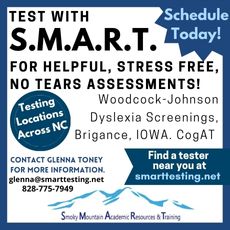
Cognitive ability or aptitude tests attempt to measure a student’s cognitive reasoning abilities. They help you know how information is learned. An achievement test measures what a student knows. A cognitive ability or aptitude test measures how well a student can process information and solve problems. The test demonstrates capability for learning and helps predict future academic success. Many public and private schools use these tests for entry into their academically gifted programs.
The most common ability tests used in homeschool are the Cognitive Abilities Test™ (CogAT®) and the Otis-Lennon School Ability Test® (OLSAT®). The CogAT is a companion product to the Iowa achievement test. The OLSAT is a companion to the Stanford achievement test. Though the CogAT can be ordered independently from the Iowa test, the OLSAT paper version usually is ordered when ordering the Stanford test. The OLSAT8 Online test can be done on your computer any time of year, independent of the Stanford Online test.
The CogAT can be administered for grades 2 (must be at least eighty-one months old) through grade 12. The test consists of three parts: a verbal battery, a non-verbal battery, and a quantitative battery. The levels for the CogAT are:
Level A: grades 2 and 3
Level B: grade 4
Level C: grade 5
Level D: grade 6
Level E: grade 7
Level F: grades 8, 9
Level G: grades 10, 11
Level H: grade 12
(A very few gifted programs might use CogATs for Gr K and 1.)
The OLSAT can also be administered beginning in grade 2 and through grade 12. It consists of two sections, a verbal and a non-verbal section. The levels for the OLSAT are:
Level C: grade 2
Level D: grade 3
Level E: grades 4, 5
Level F: grades 6–8
Level G: grades 9–12
(A very few gifted programs might use OLSATs for Gr K and 1.)
Test Format: Paper or Online:
Paper: CogAT Gr 2-12
Paper: OLSAT: Gr 2-12
Online: OLSAT: Grade 3 Spring-12
Test Length:
The CogAT is ninety minutes of working time. (The total testing time with instructions and a break is approximately 145 minutes.)
The OLSAT is exactly forty minutes of working time. (The total testing time with instructions and a break is approximately sixty minutes.)
Test Administration Requirements:
The publishers of the CogAT and the paper version of the OLSAT require the test administrator to have at least a bachelor’s degree in order to administer the test. (NC law allows parents to administer these to their children, if they abide by the publisher’s rules and instructions.)
The OLSAT8 Online test does not require the parent have a bachelor’s degree since the testing company is administering the assessment.
Extra Report with the CogAT:
The CogAT scores can be input into an interactive website which then gives you an instructional strategies report. This report can be very helpful to your understanding how to teach to your child’s learning style, strengths, and weaknesses.
Quickest Results:
OLSAT Online: immediately or within forty-eight hours.
CogAT hand scoring option (an additional fee): results in one week.
CogAT machine scoring: a couple of weeks.
Group Testing:
CogAT: all levels may test together.
OLSAT: Levels E through G (grades 4-12) may test together.
While the CogAT and OLSAT tests measure cognitive ability, in NC, a true IQ test must be supervised by a licensed psychologist. The most commonly used IQ tests are the Wechsler Intelligence Scale for Children, (also known as the WISC test), the Woodcock-Johnson Tests of Cognitive Abilities and the Kaufman Assessment Battery for Children. These tests allow you to assess if your child is working at, below or above their ability. They usually cost quite a bit more than the CogAT or OLSAT but yield information concerning short term memory, long term memory, cognitive fluency, visual-auditory learning, spatial relations and more. They help diagnose learning differences, and are used in developing IEP or 504 plans for testing accommodations or modifications.



